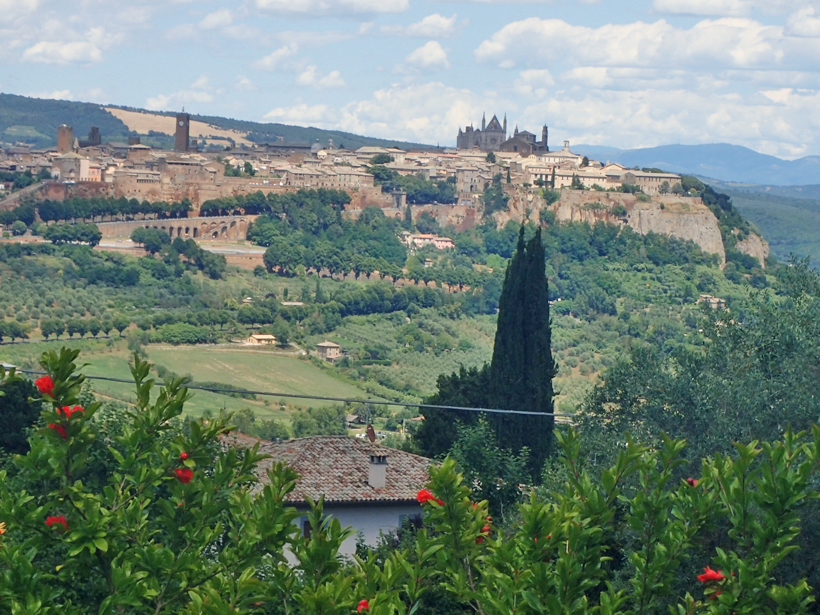Geoscience has long proved inaccessible for aspiring scientists with disabilities because of the rigorous nature of traditional field work. But starting next summer, a university in the western United States will offer a capstone summer study-abroad program based in Orvieto, Italy, that’s designed to serve students of all physical abilities. It will be the first college geoscience study-abroad program in the nation with accommodations built into the curriculum for students who have disabilities.
A different course exclusively for students with disabilities meant that those students were singled out from their classmates.
Geoscience students with disabilities at the University of Arizona (UA) in Tucson previously worked with faculty to develop an alternative to the physically demanding capstone. However, substituting the usual capstone course with a different course exclusively for students with disabilities meant that those students were singled out from their classmates. This way of accommodating students “primarily views the problem with the individual,” said Richard Bennett, a UA geosciences professor and lead instructor for the new capstone, named Accessible Earth. “The second view of teaching the curriculum says the problem is with the curriculum and it can be modified,” he added.
According to Diedre Lamb, the senior access consultant with UA’s Disability Resource Center, making alternative curricula available is a critical step in helping students with disabilities feel included. “What makes [Accessible Earth] unique is that when they apply for the program and if they’re students with disabilities, they know that accessibility has been evaluated,” she says. “They don’t have to ask for access.”
Embracing Tech
Beyond simply seeking to make the study-abroad experience more accessible, the program aims to refocus the emphasis of the trip from an arduous rite of passage to a learning experience rooted in technology and computational thinking, said Christopher Atchison, executive director of the International Association for Geoscience Diversity (IAGD) in Cincinnati, Ohio. Students in the Accessible Earth class will construct geologic maps using data they gather and analyze. Data will come from public archives, geographical information systems, and space geodetic instruments, rather than from field measurements that students typically make in a more traditional program.
The program aims to refocus the emphasis of the trip from an arduous rite of passage to a learning experience rooted in technology and computational thinking.
Class participants will also view geological landmarks during a 5-day excursion across Italy’s Adriatic coast, Venice, and the Alps. Those sites include the place where a major landslide occurred in 1963 and the South Tyrol Museum of Archaeology, home to the body of the famously preserved Iceman.
Bennett believes the chance to explore Italian culture and scientific tradition will help put the course’s tech-savvy take on geoscience in perspective. “Italy’s a great place to look back on the history of science, from the Renaissance to the Space Age,” he said. “One of the things we would like students to get from this is to understand that many of the techniques that were used by people like Galileo and Leonardo da Vinci are the same sort of concepts [used today]. We just now have tech that allows us to do these kinds of things bigger and better.”
Compared to standard geoscience study-abroad experiences marketed on college websites, Accessible Earth offers a welcome departure, said Atchison. “The very first thing that people think of when we talk about field-based learning is that you have to be out climbing the mountains, and that’s not really the way it is any longer.”
A college will “promote this idea of being out in a rugged environment as a way of encouraging others to participate. But, by doing that, it’s actually pushing people away from the diversity standpoint,” Atchison explained. People with physical and sensory disabilities are more underrepresented in the geosciences than in any other field of science, engineering, or math, he noted.
Beyond Barriers
Concerns about barriers to diversity in the geosciences have led to some initial steps to encourage inclusivity. Since IAGD’s establishment in 2008, it has been organizing field trips to give geoscience students with disabilities the chance to study abroad. In 2015, the American Geosciences Institute released the Disability Consensus Statement, which urges its signatories to be proactive in opening the field to diverse demographics.
There is still plenty of work to be done, Atchison said. “We’re making great strides to promote that awareness first, but then opportunities need to be created to move it beyond just awareness,” he added. “Opportunities like the Accessible Earth study-abroad course are going to make that happen.”
—Shannon Kelleher, Writer Intern; email: [email protected]
Citation: Kelleher, S. (2015), Students with disabilities not just welcome but expected, Eos, 96, doi:10.1029/2015EO038203. Published on 27 October 2015.
Text © 2015. The authors. CC BY-NC 3.0
Except where otherwise noted, images are subject to copyright. Any reuse without express permission from the copyright owner is prohibited.

